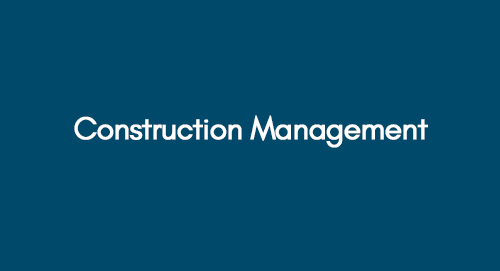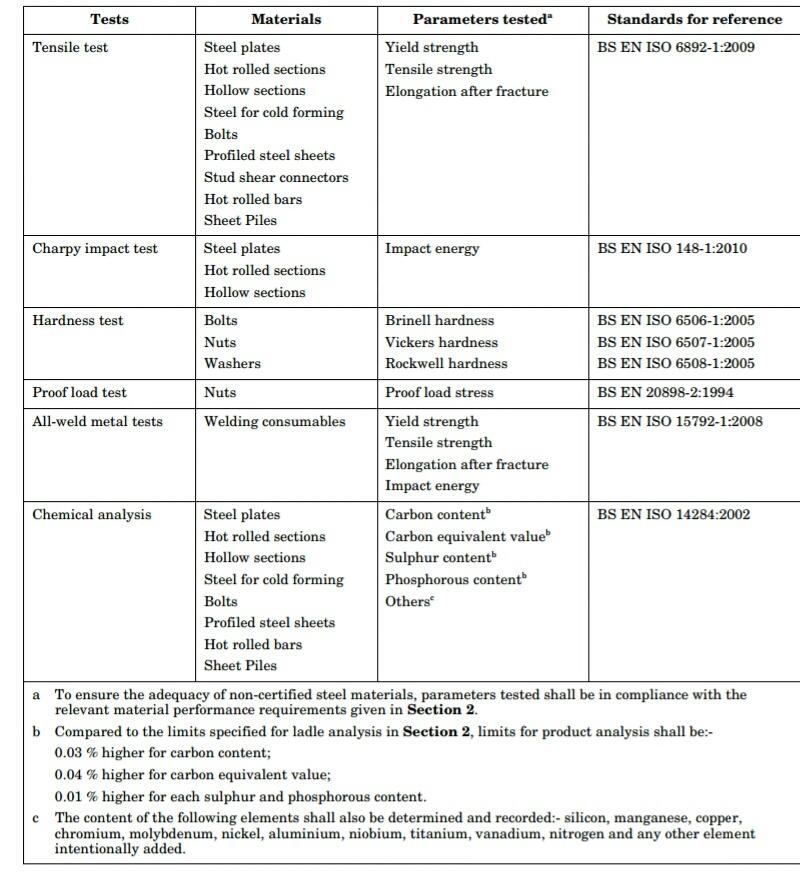
Analyzing the Effective Change Management Framework in Construction Business
December 20, 2020
Exploring Alternative Asset Classes in Consultancy Project
December 20, 2020Civil engineering is more than just bricks, concrete, and blueprints. It's about shaping the world around us, from the skyscrapers that pierce the skyline to the bridges that connect communities.
In this blog, we'll deeply dive into the fascinating world of civil engineering, exploring its history, various sub-disciplines, and significant impact on our daily lives. Civil engineering has been an integral part of human history for millennia. From the construction of the Great Wall of China to the Roman aqueducts, civil engineers have played a vital role in developing societies worldwide. These monumental structures showcase human ingenuity and the ability to adapt and thrive in different environments.
Learn More About Civil Engineering
Explore More About Civil Engineering
Civil engineering encompasses various sub-disciplines, each contributing to our modern infrastructure. We'll explore some of these, such as structural engineering, which focuses on designing and building structures that can withstand various forces and loads. Then, transportation engineering is responsible for developing efficient and safe systems for moving people and goods, including roadways, railways, and airports. The field of civil engineering is no stranger to innovation. With the advent of advanced materials and technologies, engineers can create sustainable and eco-friendly solutions. Civil engineers are at the forefront of incorporating the latest advancements into their projects, from smart buildings that adapt to environmental conditions to cutting-edge construction techniques.
Executive Summary
This research endeavour is focused on the comparative assessment of European and Chinese standards about the type and quality of Steel Beams and Concrete employed in construction projects. Through an extensive review of the literature and in-depth case study analyses, the study aims to discern the significant distinctions in quality standards between the UK and Chinese construction industries, with a specific emphasis on guidelines concerning the use of structural steel and reinforced concrete in building infrastructures. The growing concerns within the UK construction industry regarding the quality of Chinese steel beams and concrete necessitate an in-depth exploration of the reasons behind these apprehensions. This study seeks to achieve this objective by comprehensively analysing existing literature.
Research Question: To investigate the substantial disparities between European and Chinese quality standards for concrete and steel beams.
European & Chinese Construction Standards
Building and Construction Design guidelines are instrumental in establishing the code of practice for using construction raw materials such as steel and concrete in countries across the globe. This research is specifically geared towards comprehending the distinctions in quality standards of materials, such as steel and concrete, in construction structures, with a primary focus on the UK and Chinese construction industries. European standards governing the use of steel and concrete in various structures are enshrined in charters that promote sustainability in the construction industry. The UK construction industry and numerous global vendors adopt these standards and quality codes to ensure that construction materials deliver the desired functionality and optimal performance in the structures they constitute. This facilitates the overarching goal of sustainable development, accompanied by enhanced performance (Engineering Employers Federation, 2015).
In the UK, the standard-setting body for the steel industry regularly publishes updates on design and construction practices and guidelines concerning various steel forms, including new and recycled steel. Pertinent material standards associated with the design and quality of construction materials encompass standards like the British Standard "BS 5950 Structural Use of Steelwork in Building" and Eurocode 3 "EN 1993 Design of Steel Structures." These standards, along with various others, pertain to aspects such as steel manufacturing, transportation, marking, and cutting, in addition to alternative forms of steel and concrete for construction structures (Building and Construction Authority, 2012).
Concrete, another essential construction material, is subject to European and Chinese standards regulating its appropriate use, preparation, testing, and packaging. The key European standard governing specifications, performance, manufacturing, and compliance is EN-206-1, which provides a framework for the British concrete standard BS-8500. It offers comprehensive technical specifications and guidelines for using cement, admixtures, and aggregates in construction. In China, the national and industry standard for concrete quality control is GB-50146-12, with other national standards such as DT/L 5100-2400 for hydraulic concrete and GB-10424-2003 for concrete employed in railway projects and masonry.
Vendors involved in construction must adhere to British and European Standards that encompass various areas, including quality assurance standards related to materials and performance testing procedures and guidelines. Most countries have their codes of practice for the optimal utilization of materials like concrete and steel by European standards, along with additional practice codes designed to address materials manufactured outside these standards. The figure below illustrates the parameters of such processes against the reference standards to be followed, which clearly indicates that almost all of the processes involved must be completed by the quality standards implicated by the governing organisations.

Figure 1: Steel Testing Procedures
The Chinese market has emerged as a pivotal hub for the rapidly expanding construction industry, driving substantial imports of critical construction materials like cement, slabs, and steel components such as beams, plates, piles, and bars. These Chinese steel materials find their way into construction projects across European countries. While it is true that Chinese quality standards for concrete and steel beams align with acceptable European standards, recent months have witnessed a growing apprehension within the UK steel industry regarding the quality of specific steel products, including beams and piles. This raises a critical question: what precisely accounts for this discrepancy in construction material quality that has become a cause for concern?
The UK's construction standards pivot around sustainability principles in the construction industry, emphasizing public safety and the imperative for quality concerning the design of permanent and temporary construction structures and buildings. The quality system emphasises aspects like traceability and the reusability of construction materials, focusing on the chemical and physical composition of materials such as concrete and steel products. Guidelines and quality assurance procedures mandated by the UK construction industry dictate that suppliers and fabricators of construction materials must ensure durability, adherence to mass and dimensional tolerance, and promote best construction practices. These guidelines outline rigorous processes for individual marking, curing, transporting, and testing new and reusable steel materials used for beams, plates, and other applications. Compliance with these guidelines requires submitting essential documents such as TEST reports, manufacturer test certifications, and relevant material documentation, without which the material cannot be employed in building projects (Building and Construction Authority, 2012).
However, the issue is evaluating whether the Chinese steel industry effectively adheres to this rigorous UK standard. One method to ensure compliance is material traceability, the ability to trace a steel product back to its source and understand its raw materials. It involves the capacity to pinpoint a specific steel or concrete product through quality assurance mechanisms and identification. Although guidelines place significant emphasis on material traceability, the concept of material reusability is equally vital, reflecting the material's suitability for reuse in construction and its ability to deliver the expected performance. Factors like the correct mixing of steel grades, proper marking, and corrosion protection coatings are among the key points of emphasis in this context.
Causal Analysis - Growing Concerns Over Chinese Quality Standards
Steel, a vital component in construction, is frequently incorporated into concrete to create reinforced concrete and high-performance concrete (HPC) for various building applications. High-performance concrete, defined by Forster (1994), represents a meticulously designed blend of selected materials, meticulously adhering to design guidelines and following precise procedures for marking, curing, batching, transportation, and consolidation. The goal is to achieve high performance and load-bearing capacity in structures. Reinforced concrete, often coupled with high-strength concrete (HSC), enhances a structure's durability and tensile strength. This confluence of concrete variations involves steel elements such as bars, piles, and sheets or plates. The performance of such concrete is intrinsically linked to the quality of its components, including steel products. Importing Chinese steel plates into European countries has raised questions regarding the chemical composition of the steel used in beams and bars (Engineering Employers Federation, 2015).
A notable development in this context is the safety advisory issued by UK Steel, an active member of The Engineering Employers Federation (EEF). On March 3, 2015, UK Steel's director, Ian Rodgers (2015), expressed concerns about the quality of Chinese structural steel products, including plates and beams, entering the UK construction market. These steel products did not fully comply with European and British standards for steel structure designs. Earlier concerns were also raised regarding Chinese reinforcement bars and the quality of admixtures used to prepare reinforced concrete.
The European standards emphasize that structural steel standards apply to non-alloy steel, which refers to steel devoid of certain elements added to enhance durability. The standards specify acceptable levels of additional elements for steel to be classified as non-alloy. All non-alloy steel products must adhere to these prescribed limits to ensure enhanced weldability and the avoidance of additional welding parameters. The quality of non-alloy steel significantly influences the performance and sustainability of building structures, particularly in terms of security fundamentals.
The imported Chinese steel bars and beams have raised concerns due to elevated levels of elements like Boron and Chromium, which fail to meet the non-alloy requirements outlined in European and British standards. The growing unease about these additional elements in Chinese steel has been a recurrent issue recently, casting doubts on using and importing Chinese steel. Chinese vendors often add these elements to take advantage of tax rebates for exporting alloy materials. However, these structural steel products do not meet the standards defined by European design and construction guidelines for structural steel. Moreover, including such elements can adversely affect steel, particularly during the welding process, as they can lead to material cracks that may only become apparent after 48 hours, posing challenges in production and design.
Quality concerns extend to the realm of concrete in China's construction industry. A Wired UK publication in 2013 highlighted the discovery of low-quality concrete in China's tallest skyscraper in Shenzhen. Investigation revealed that the cement composition contained unprocessed, coarse sea sand particles, causing construction to halt. Ideal cement or concrete typically comprises meticulously proportioned crushed gravel or rock and suitable admixtures. UK industry publications have also drawn attention to the quality of reinforced concrete bars in the UK market, focusing on the chemical composition of admixtures.
Additional research has unveiled the presence of higher copper levels in Chinese imported steel plates and beams (Ian Rodgers, 2015). UK Steel has strongly recommended avoiding alloyed steel products, especially during welding, and exercising extra caution when using steel products such as plates, bars, and sections in welding applications. Practitioners must thoroughly inspect alloyed steel products before utilizing them in construction projects, particularly in heavy machinery and construction domains. UK Steel, the primary trade body for the UK steel industry, places immense emphasis on the quality of construction materials. Ian Rodgers (2015) said this was the second warning concerning quality concerns related to Chinese imported steel plates, beams, and bars.
The use of steel and concrete is integral to construction endeavours globally. These materials lay the foundation for sturdy and resilient structures. Yet, questions surrounding the quality and standards of Chinese steel and concrete in the UK and European construction industry have emerged. This article delves into the crux of these concerns and the notable differences between European and Chinese standards.
In an October 2014 publication, UK Steel raised concerns about the quality of steel used in Chinese steel rebars and beams. Specifically, the spotlight was on the traceability requirements associated with the British and European standards (Engineering Employers Federation, 2015).
The initial alert in August of that year concerned the Chinese structural materials' noncompliance with the European standard BS 4449. All three complaints reported to UK Steel concerned imported Chinese structural materials in the UK market. Ian Rodgers (2005) emphasized the importance of evaluating non-European steel rebars, concrete rebars, and beams for adherence to design and construction guidelines, focusing on traceability requirements.
Subsequently, in a January publication, UK Steel reported that imported Chinese steel bars and rebars contained higher levels of boron beyond acceptable British and European standards. Chinese records indicated minimal element additions to the steel beams and bars imported to the UK and European markets to benefit from tax rebates. In contrast, UK officials discovered that many Chinese steel bars and beams contained boron exceeding eight parts per million. Samples tested during conformity assessments revealed boron levels as high as 30 ppm (Engineering Employers Federation, 2015).
The Welding Institute, a prestigious organization for welding procedures, certification, and training, recommended an optimal boron limit of 5 ppm. Exceeding this threshold necessitates adjustments to welding procedures, including enhanced vigilance concerning consumable hydrogen levels, slower welding, and increased heat input. This recommendation underlines the importance of thoroughly inspecting Chinese steel products for compliance and suitability in construction, particularly during welding processes.
The concerns don't stop at boron levels. UK Steel's reports also raised questions about concrete quality in the Chinese construction industry. Wired UK published an article in 2013 about low-quality concrete in constructing China's tallest skyscrapers. The cement contained unprocessed, coarse sea sand particles, temporarily halting construction. The contrast between subpar cement and the carefully proportioned materials typical in ideal concrete was stark.
Overall, the UK steel and construction industry prioritizes sustainability, which underlines their concerns about the quality of Chinese construction materials. In the UK, British steel production significantly contributes to the economy, with substantial exports, tax revenues, and job opportunities. The construction industry is interested in adhering to sustainability standards, such as the BES 6001 standard for sustainable steel production, emphasising material traceability and reusability.
In the realm of concrete, European guidelines exist for proper use in buildings. Europe and China have established standards and guidelines for materials like steel and cement. While slight differences in chemical composition concerning alloy materials may exist, these variances do not suggest a fundamental deviation from the core standards.
The debate over Chinese steel and concrete in European and UK construction markets reflects the construction industry's pursuit of high-quality, sustainable materials, a shared global goal. The transition from Chinese steel and concrete suppliers to higher-quality products has triggered discussions and policy changes in various industry sectors. How the industry responds and adapts to these ongoing concerns is yet to be seen, aligning with the quest for quality and sustainability.
Reference List
Ajdukiewicz, A., Kliszczewicz, A., 2002. Influence of recycled aggregates on mechanical properties of HS/HPC. Cem. Concr. Compos. 2, 269-279.
Aggregates for Mortar and Concrete, 2002. Part 100, Recycled Aggregates; Deutsches Institut Fur Standardization: Berlin, Germany, 2002. p. 18.
BC1- Design guide on using Alternative Structural steel to BS5950 and Eurocode 3, Building and Construction Design Guide 2012. Building and Construction Authority 2012.
Concrete—Complementary British Standard to BS EN 206-1—Part 2: Specification for Constituent Materials and Concrete; British Standards Institute (BSI): London, UK, 2006. p. 38.
Domingo-Cabo, A.; Lázaro, C.; López-Gayarre, F.; Serrano-López, M.A.; Serna, P.; Castaño-Tabares, J.O., 2009. Creep and shrinkage of recycled aggregate concrete. Constr. Build. Mater. 2009, 7, 2545-2553.
Engineering Employers Federation, 2015. Available at: <http://www.eef.org.uk/uksteel/Representing-our-sector/briefings/UK-Steel-Warns-About-Boron-Alloyed-Chinese-Rebar.htm/> Accessed [1 December 2015]
Evangelista, L., Brito, J. Mechanical behaviour of concrete made with fine recycled concrete aggregate. Cem. Concr. Compos. 2007, 5, 397-401.
Eurocode 2: Design of Concrete Structures—Part 1-1: General Rules and Rules for Buildings (EN 1992-1-1), European Committee for Standardization (CEN): Brussels, Belgium, 2004.
Figure 1: Steel Testing Procedures, BC1- Design guide on using Alternative Structural steel to BS5950 and Eurocode 3, Building and Construction Design Guide 2012.
Figure 2: European Standards -1, BC1-Design guide on using Alternative Structural steel to BS5950 and Eurocode 3, Building and Construction Design Guide 2012.
Figure 3: European Standards -2, BC1- Design guide on use of Alternative Structural steel to BS5950 and Eurocode 3, Building and Construction Design Guide 2012.
Figure 4: Chinese Standards -1, BC1- Design guide on use of Alternative Structural steel to BS5950 and Eurocode 3, Building and Construction Design Guide 2012.
Figure 5: Chinese Standards -2, BC1- Design guide on use of Alternative Structural steel to BS5950 and Eurocode 3, Building and Construction Design Guide 2012.
Gómez-Soberón, J.M.V. Shrinkage of concrete with replacement of aggregate with recycled concrete aggregate. ACI Spec. Publ. 2002, 209, 475-496.
Gómez-Soberón, J.M.V. Creep of concrete with substitution of normal aggregate by recycled concrete aggregate. ACI Spec. Publ. 2002, 209, 461-474.
López-Gayarre, F., Serna, P., Domingo-Cabo, A., Serrano-López, M.A., López-Colina, C. Influence of recycled aggregate quality and proportioning criteria on recycled concrete properties. Waste Manag. 2009, 12, 3022-3028.
Malešev, M., Radonjanin, V., Dimča, 2006. M. Research of the possibility of application of recycled concrete as aggregate for new concrete—Part I. In Proceeding of 4th International Science Meeting, INDIS 2006 (Planning, Design, Construction and Renewal in the Construction Industry), Novi Sad, Serbia, 22–24 November pp. 495-504.
Poor-Quality Chinese Concrete Could Lead to Skyscraper Collapses, Wired UK, 2015. Available at: <http://www.wired.com/2013/03/poor-quality-chinese-concrete-could-lead-to-skyscraper-collapses/> Accessed [3 December 2015]
Poon, C.S., Azhar, S.,Kou, S.C., 2003. Recycled aggregates for concrete applications. In Proceeding of the Materials Science and Technology in Engineering Conference—Now, New and Next, Hong Kong, China, 15–17 January 2003; p. 16.
Rahal, K. Mechanical properties of concrete with recycled coarse aggregate. Build. Environ. 2007, 1, 407-415.
Recycling and reusing waste concrete in China: Part I. Material behaviour of recycled aggregate concrete. Resour. Conserv. Recycle. 2008, 1-2, 36-44.
Sanchez de Juan, M., Gutierrez, P.A., Influence of recycled aggregate quality on concrete properties. In Proceeding of the International RILEM Conference: The Use of Recycled Materials in Building and Structures, Barcelona, Spain, 8–11 November 2004, pp. 545-553.
Salem, R.M., Burdette, E.G. Jackson, N.M., 2003. Resistance to freezing and thawing of recycled aggregate concrete. ACI Mater. J. 2003, 100, 216-221.
UK Steel highlights concerns over the quality of imported rebar, Engineering Employers Federation, 2015. Available at: <http://www.eef.org.uk/uksteel/Representing-our-sector/briefings/UK-Steel highlights-concerns-over-the-quality-of-imported-rebar.htm/> Accessed [1 December 2015]
Yang, K.H., Chung, H.S., Ashour, A., 2008. Influence of type and replacement level of recycled aggregates on concrete properties. ACI Mater. J. 2008, 3, 289-296.
Zaharieva, R., Buyle-Bodin, F., Wirguin, E., Frost resistance of recycled aggregate concrete. Cem. Concr. Res. 2004, 10, 1927-1932.
Get 3+ Free Dissertation Topics within 24 hours?













